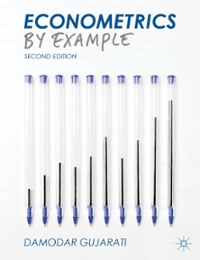Question
The New York Times reported...That subway ridership declined by five (5) million fewer riders in December, 1995, the first full month after the price of
The New York Times reported...That subway ridership declined by five (5) million fewer riders in December, 1995, the first full month after the price of the token increases by + $.75 to $2.00 (+ 60%)than in the previous December. This resulted in a 15 % decline in riders.
> With this information, estimate the Price elasticity of Demand (PED) for subway rides;
> According to your analysis, what happens to the Transit Authority's total revenue when the fare rises? Explain ?
>Why might your initial elasticity (PED) calculation be unreliable?
> If your explicit total cost is $50 M (Accounting costs) and $60 M Economic costs, based on the token increase, are you now generating enough revenue to cover your operating costs? What is the profit / loss turn-around ? Interpret your profit (loss) results.
> The difference between Accounting costs (explicit) and Economic costs is the inclusion of your Opportunity cost ($ 10 M).
Accounting costs = Fixed plus Variable costs =$ 50 M
Economic costs = Accounting costs + Opportunity costs; $ 50 M + $ 10 M = $ 60 M.
* Hint: Formulas to use are TR - TC = Profit;
* Accounting Profit (Loss): TR - Accounting TC = Profit (Loss)
* Economic Profit (Loss): TR - Economic TC = Profit (Loss)
* Price Elasticity of Demand is = % Change in Quantity Demanded / % Change in Price....the absolute value. ( 15 %/ 60 %)
* TR = Total Revenue (P * Q); Total Cost (Accounting) = Fixed + Variable = $50 M; Total Cost (Economic) = Fixed + Variable + Opportunity Cost = $ 60 M.
* Ridership PRIOR the token increase ($ 1.25) = 5 M / 15 % ; Ridership AFTER the token increase ($ 1.25) = 5 M /15%- 5 M = ??
* Ridership change: 33.3 M @ $1.25 token versus 28.3 M @ $2.00 token; That is 5 M less riders due to the token increase from $1.25 to $2.00.
Change the Parameters of the Problemto include the following.....Note: Same time period (one month).
* Token price increases from $1.25 to $2.50: Ridership now declines to 25 % equivalent to 10 M less riders.......Assume costs (accounting) increase to $ 55 M and economic costs increase to $ 65 M;
* What is your revised PED ?; What are your new profit & loss values based on evaluation of both accounting & economic costs ? Are you better or worse off ?
* What could happen if your analysis was extended from one(1) month to six (6) months ?
* What could happen if your market's (audience) average income increases or decreases by+ / - 15 % given the change in the token cost from $1.25 to $2.50 ? Would your PED and profit / loss values change as well ?
Step by Step Solution
There are 3 Steps involved in it
Step: 1

Get Instant Access to Expert-Tailored Solutions
See step-by-step solutions with expert insights and AI powered tools for academic success
Step: 2

Step: 3

Ace Your Homework with AI
Get the answers you need in no time with our AI-driven, step-by-step assistance
Get Started


